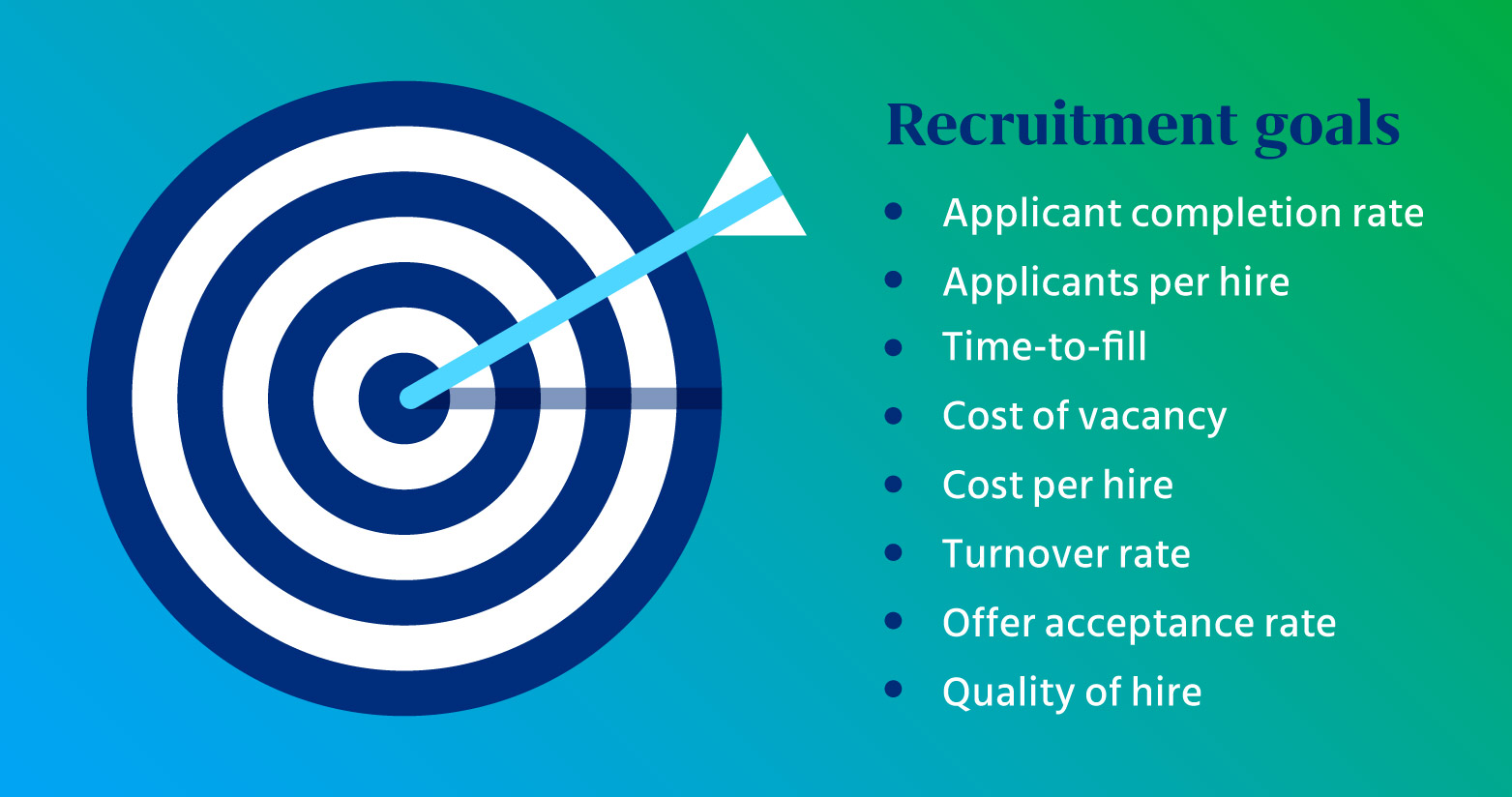Understanding the need for recruitment goals and defining them is vital. Clarifying objectives pays off, saving the hassles of trials and errors. It streamlines the hiring process. Well-defined recruitment objectives, along with selection objectives, are conducive to creating an effective hiring strategy. Moreover, clarity in goals saves time, cost, energy and resources, creating an efficient hiring strategy.
- Starting with listing requirements
These can include questions such as: How many employees will be recruited? What are the available positions for hiring, and what jobs would be available in the future? Clarifying these basic requirements helps allocate time and energy in the right direction.
- Considering the average turnover rate
Factoring the average turnover rate into the hiring equation helps define the goals. The turnover rate represents the number of people hired instead of those who have taken exit over a certain period. This crucial HR key performance indicator implies the organization’s stability. The turnover rate is defined through workforce data collected over the entire year.
- Analyzing each department’s staffing requirement
After considering the turnover rate, it is essential to determine and analyze each department’s recruiting intervention levels and assess whether it works at total capacity. Vacancies require varied levels of attention.
The recruiter must prepare for hiring beforehand. It is not feasible to prioritize growth-focused hiring over turnover; both must be the recruiter’s top priority.
- Focusing on quality, not quantity
A selective approach to recruitment helps hire top talent who add immense value. Therefore, focusing on employee quality is vital. Analyzing their competencies, performance, and underlying personality traits, engaging in professional deliberations with the team to outline essential qualities in employees, and sticking with those preferences are vital to the organization’s growth and engaging new hires further.
- Determining the current stage
Recruitment objectives are dependent on the current stage. The workforce needs will differ from a legacy enterprise to a budding startup. The goals and preferences change as one advances through the different business stages, and a diverse workforce accommodates the changing needs.
- Building a successful talent pipeline
By understanding the recruitment objectives, one can create a talent pipeline framework. Well-defined recruitment goals are the building blocks of developing a talent pipeline. It helps in understanding the needs of prospective employees and tailoring offerings to suit them. It is a win-win for both the recruiter and the jobseeker.










 Behavioral Competencies
Behavioral Competencies Cognitive Competencies
Cognitive Competencies Coding Competencies
Coding Competencies Domain Competencies
Domain Competencies














































































